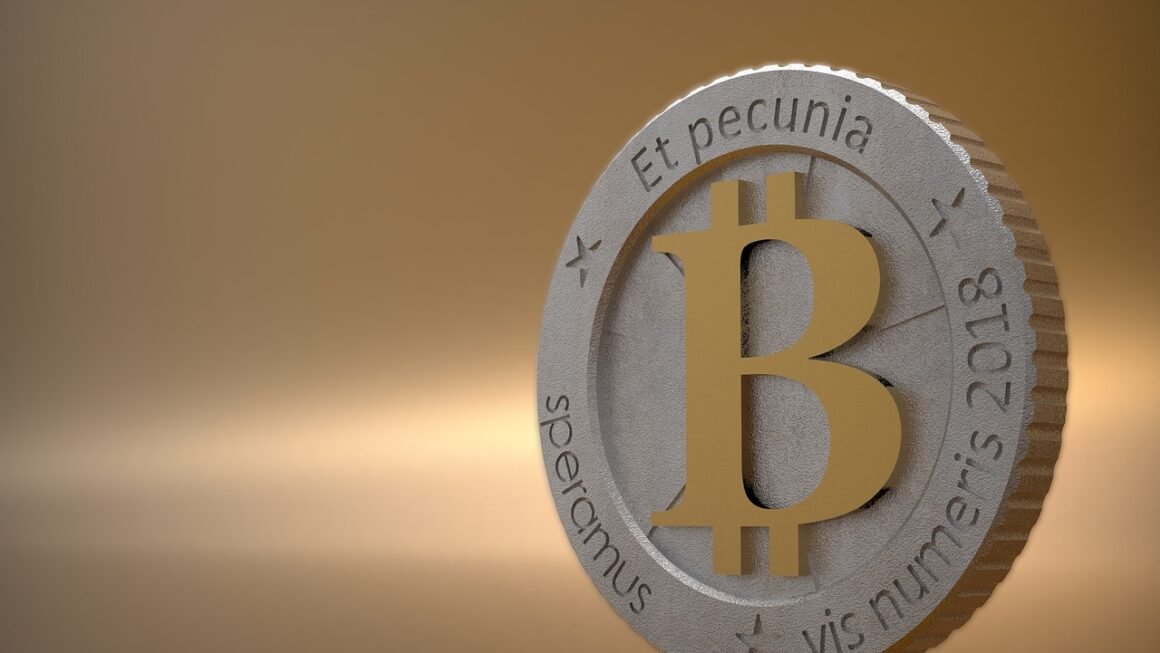Layer 2 solutions are rapidly transforming the landscape of blockchain technology, addressing the pressing need for scalability and efficiency. As the demand for decentralized applications (dApps) continues to surge, the limitations of layer 1 blockchains, like Ethereum, have become increasingly apparent. Transactions can be slow, and fees can be exorbitant, hindering widespread adoption. Layer 2 technologies offer a compelling answer by providing off-chain scaling solutions that enhance transaction throughput and reduce costs while maintaining the security of the underlying blockchain. This post will delve into the world of layer 2 solutions, exploring their types, benefits, and impact on the future of blockchain.
Understanding Layer 2 Scaling Solutions
What are Layer 2 Solutions?
Layer 2 solutions are protocols built on top of existing layer 1 blockchains, such as Ethereum, Bitcoin, or Solana. They operate “off-chain,” meaning they handle transactions away from the main blockchain. This alleviates congestion on the main chain, allowing for faster and cheaper transactions. The final result of these off-chain transactions is then periodically recorded on the layer 1 blockchain, leveraging its security and decentralization. Think of it like having express lanes on a highway; most cars can bypass the regular congestion and merge back later.
Why are Layer 2 Solutions Important?
Layer 2 solutions are vital for the scalability of blockchain technology. Layer 1 blockchains often face limitations in transaction throughput and high gas fees, hindering their usability for everyday transactions and wider adoption of dApps. Consider Ethereum, the most popular blockchain for dApps. During periods of high network activity, gas fees can spike to tens or even hundreds of dollars per transaction, making it impractical for many users. Layer 2 solutions address these limitations by offering:
- Increased Transaction Throughput: Processing transactions off-chain significantly increases the number of transactions that can be processed per second (TPS).
- Reduced Transaction Fees: Off-chain transactions are typically much cheaper than on-chain transactions.
- Improved User Experience: Faster transaction speeds and lower fees result in a smoother and more user-friendly experience for dApp users.
- Scalability for dApps: Layer 2 solutions allow dApps to handle a larger number of users and transactions without being constrained by the limitations of the layer 1 blockchain.
Types of Layer 2 Solutions
State Channels
State channels allow parties to conduct multiple transactions off-chain while only submitting two transactions to the main chain: one to open the channel and another to close it. All intermediate transactions are handled off-chain. Examples include:
- Lightning Network (Bitcoin): A state channel solution designed for faster and cheaper Bitcoin transactions, primarily for micro-payments.
- Raiden Network (Ethereum): Similar to Lightning Network, designed for fast and cheap Ethereum transactions.
Practical Example: Alice and Bob want to frequently exchange small amounts of cryptocurrency. Instead of paying fees for each transaction on the main chain, they open a state channel. They can then conduct countless transactions within the channel, only settling the final balance on the main chain when they close the channel.
Sidechains
Sidechains are independent blockchains that run parallel to the main chain. They have their own consensus mechanisms and block structures but are interoperable with the main chain through a two-way peg. This allows assets to be transferred between the main chain and the sidechain.
- Polygon (Matic Network): A popular sidechain solution for Ethereum, offering faster and cheaper transactions for dApps. It has its own Proof-of-Stake consensus mechanism.
- xDai Chain: A stablecoin-based sidechain for Ethereum that provides fast and cheap transactions.
Practical Example: A dApp developer wants to build a game with a high volume of in-game transactions. Instead of deploying the game directly on Ethereum, they deploy it on Polygon, where transaction fees are significantly lower. Users can easily transfer their ETH or other ERC-20 tokens to Polygon to participate in the game.
Rollups
Rollups aggregate multiple transactions into a single transaction on the main chain, significantly reducing gas costs. There are two main types of rollups:
- Optimistic Rollups: Assume transactions are valid unless proven otherwise. They rely on a “fraud-proof” mechanism, where anyone can challenge an invalid transaction within a certain timeframe. Examples include Arbitrum and Optimism.
- Zero-Knowledge Rollups (zk-Rollups): Use cryptographic proofs called zero-knowledge proofs to verify the validity of transactions. They don’t require a challenge period, making them faster and more secure. Examples include zkSync and StarkNet.
Practical Example: A decentralized exchange (DEX) uses an optimistic rollup. When users execute trades, these trades are processed off-chain and then bundled into a single transaction on the Ethereum mainnet. If someone detects a fraudulent trade, they can submit a fraud proof, and the rollup can revert the invalid transaction.
Benefits of Using Layer 2 Solutions
Cost Efficiency
One of the most significant benefits of layer 2 solutions is the dramatic reduction in transaction fees. By processing transactions off-chain, they bypass the high gas fees associated with layer 1 blockchains. This makes it more affordable for users to interact with dApps and conduct transactions.
Example: Sending ETH on Ethereum directly might cost $5-20 in gas fees during peak times. Using a layer 2 solution like Polygon can reduce the cost to fractions of a cent.
Scalability and Speed
Layer 2 solutions significantly increase the transaction throughput of blockchains. By processing transactions off-chain, they can handle a much larger volume of transactions than the main chain can handle alone. This results in faster transaction confirmations and a better user experience.
Example: Ethereum can process approximately 15-30 transactions per second (TPS). Some layer 2 solutions, like Polygon, can process thousands of TPS.
Enhanced User Experience
Lower fees and faster transaction times contribute to a more seamless and user-friendly experience for dApp users. This is crucial for attracting new users to the blockchain ecosystem and fostering wider adoption.
- Faster Deposits and Withdrawals: Reduced transaction times make it quicker to deposit and withdraw funds to and from dApps.
- Improved dApp Responsiveness: Users experience less lag and delay when interacting with dApps built on layer 2 solutions.
Challenges and Considerations
Security Trade-offs
While layer 2 solutions inherit the security of the underlying layer 1 blockchain, they may introduce their own security trade-offs. It’s essential to carefully consider the security model of each layer 2 solution before using it.
- Trust Assumptions: Some layer 2 solutions may rely on trusted operators or validators, which can introduce centralization risks.
- Smart Contract Vulnerabilities: The smart contracts that govern layer 2 solutions can be vulnerable to exploits.
Complexity and Interoperability
Layer 2 solutions add complexity to the blockchain ecosystem. Users may need to bridge their assets to different layer 2 networks, which can be confusing and time-consuming. Interoperability between different layer 2 solutions is also still under development.
- Bridging Challenges: Moving assets between layer 1 and layer 2, or between different layer 2 solutions, can involve complex bridging mechanisms and potential risks.
- Ecosystem Fragmentation: The proliferation of different layer 2 solutions can fragment the ecosystem and make it more difficult for users to find and use dApps.
Adoption and Liquidity
The success of layer 2 solutions depends on their adoption by users and developers. A lack of liquidity on a particular layer 2 network can make it difficult to trade assets or interact with dApps.
- Network Effects: Layer 2 solutions benefit from network effects; the more users and dApps that use a particular solution, the more valuable it becomes.
- Incentives for Adoption: Developers and projects may need to offer incentives to attract users to layer 2 solutions.
Future of Layer 2 Solutions
Layer 2 solutions are poised to play a crucial role in the future of blockchain technology. As the demand for scalable and efficient blockchain applications continues to grow, layer 2 solutions will become increasingly important for enabling mass adoption. Ongoing research and development are focused on improving the performance, security, and interoperability of layer 2 solutions.
Potential Developments:
- Improved Interoperability: Efforts are underway to develop standards and protocols that will allow different layer 2 solutions to communicate with each other more seamlessly.
- Advanced Rollup Technologies: zk-Rollups are expected to become more widely adopted as they offer faster and more secure scaling compared to optimistic rollups.
- Hybrid Approaches: Combinations of different layer 2 techniques may emerge to leverage the strengths of each approach.
Conclusion
Layer 2 solutions represent a significant advancement in blockchain technology, addressing the critical need for scalability and efficiency. By processing transactions off-chain, they offer faster transaction speeds, lower fees, and an improved user experience. While challenges remain, ongoing developments are paving the way for a more scalable and accessible blockchain ecosystem. Whether it’s state channels, sidechains, or rollups, understanding layer 2 solutions is crucial for anyone looking to participate in the future of decentralized applications and Web3. The landscape is constantly evolving, so staying informed about the latest advancements is essential to navigating this exciting space.



